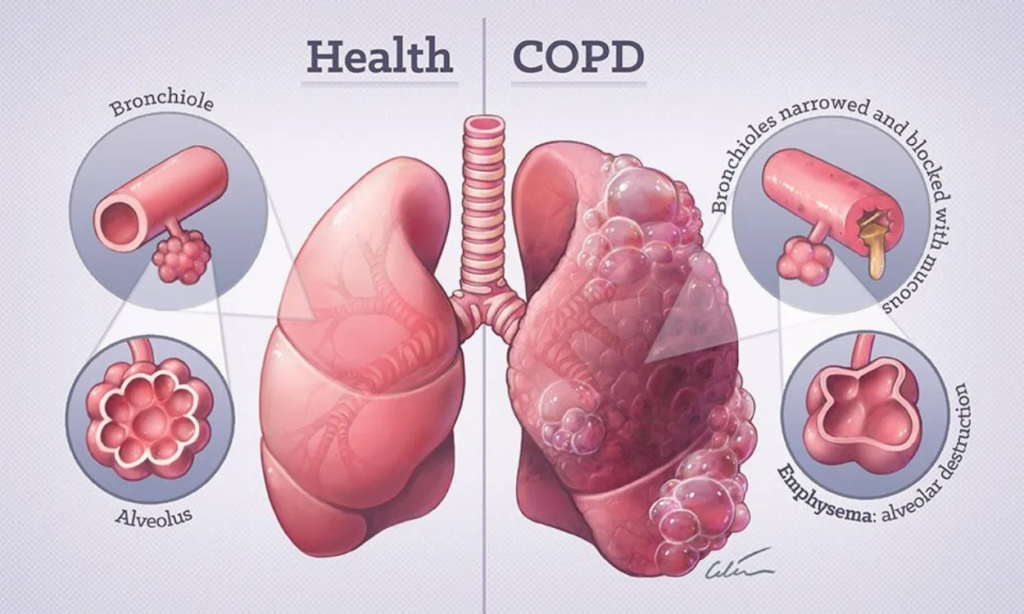Chronic Obstructive Pulmonary Disease (COPD) is a progressive respiratory condition characterized by airflow limitation and breathing difficulties. One of the primary goals in managing COPD is to improve lung function, enhance exercise tolerance, and ultimately, enhance the patient’s quality of life. Exercise plays a crucial role in achieving these objectives, and when combined with appropriate medication such as the Asthalin inhaler, significant improvements in lung function can be observed. This article explores various exercises tailored to COPD patients and the synergistic effects of incorporating the Asthalin inhaler into their treatment regimen.
Further research and clinical trials are continually exploring the optimal combination of exercise modalities and medication regimens to maximize outcomes for COPD patients. Additionally, advancements in technology have led to the development of innovative tools and mobile applications that assist patients in monitoring their symptoms, tracking their exercise progress, and adhering to their medication schedule.
Moreover, patient education and self-management strategies play a crucial role in empowering COPD patients to take control of their condition. Providing education on proper inhaler technique, recognizing exacerbation symptoms, and understanding the importance of medication adherence can help improve treatment outcomes and reduce healthcare utilization.
Understanding COPD and Lung Function
COPD encompasses conditions such as chronic bronchitis and emphysema, which lead to airway obstruction and reduced lung function. The hallmark symptoms include shortness of breath, chronic cough, and excessive mucus production. As the disease progresses, lung function declines, making it increasingly challenging for patients to perform daily activities and exercise.
Exercise in COPD Management
Exercise is a cornerstone in COPD management as it helps improve cardiovascular fitness, muscular strength, and overall quality of life. However, designing exercise programs for COPD patients requires careful consideration of their limitations and individualized needs. Some beneficial exercises for COPD patients include:
Aerobic Exercises
Walking, cycling, and swimming are excellent aerobic exercises that help strengthen the heart and respiratory muscles. These activities also improve oxygen utilization and overall endurance.
Strength Training
Incorporating resistance training using light weights or resistance bands can help strengthen the muscles involved in breathing, such as the diaphragm and intercostal muscles.
Breathing Exercises
Techniques such as pursed-lip breathing and diaphragmatic breathing can help Chronic obstructive pulmonary disease COPD patients improve their breathing efficiency and reduce shortness of breath during physical activity.
Flexibility and Balance Exercises
Stretching exercises and activities that improve balance are essential for COPD patients to maintain mobility and reduce the risk of falls.
The Role of Asthalin Inhaler
In addition to exercise, medication plays a vital role in managing COPD symptoms. The asthalin inhaler, which contains salbutamol as its active ingredient, is commonly prescribe to COPD patients to alleviate symptoms such as wheezing and shortness of breath. Salbutamol is a bronchodilator that works by relaxing the muscles in the airways, making it easier for air to flow in and out of the lungs.
Synergistic Effects of Exercise and Asthalin Inhaler
When exercise and medication are combine, COPD patients can experience synergistic benefits that enhance lung function and overall well-being. Exercise helps improve cardiovascular fitness and respiratory muscle strength, while the Asthalin inhaler provides immediate relief by opening up the airways and reducing bronchospasm during physical activity. This combined approach allows patients to exercise more comfortably and for longer durations, leading to greater improvements in lung function over time.
Incorporating Asthalin Inhaler into Exercise Regimens
COPD patients should use their Asthalin inhaler as prescribe by their healthcare provider, typically before engaging in physical activity. By taking a dose of the inhaler before exercise, patients can preemptively open up their airways and reduce the likelihood of experiencing symptoms such as wheezing or breathlessness. Additionally, carrying the inhaler during exercise provides reassurance to patients, knowing that they have immediate access to symptom relief if need.
Monitoring Progress and Adjusting Treatment
Regular monitoring of lung function and exercise tolerance is essential for assessing the effectiveness of treatment and making any necessary adjustments. Healthcare providers may recommend pulmonary function tests and exercise tolerance assessments to track improvements over time. Base on these results, adjustments to medication dosage or exercise intensity may be made to optimize outcomes for the patient.
Conclusion
Improving lung function in COPD patients requires a multi face approach that includes both exercise and medication. Incorporating exercises tailor to the individual needs of COPD patients, along with the use of medications such as the Asthalin inhaler, can lead to significant improvements in lung function, exercise tolerance, and overall quality of life. By working closely with healthcare providers and adhering to a comprehensive treatment plan, COPD patients can better manage their condition and enjoy a more active lifestyle.


